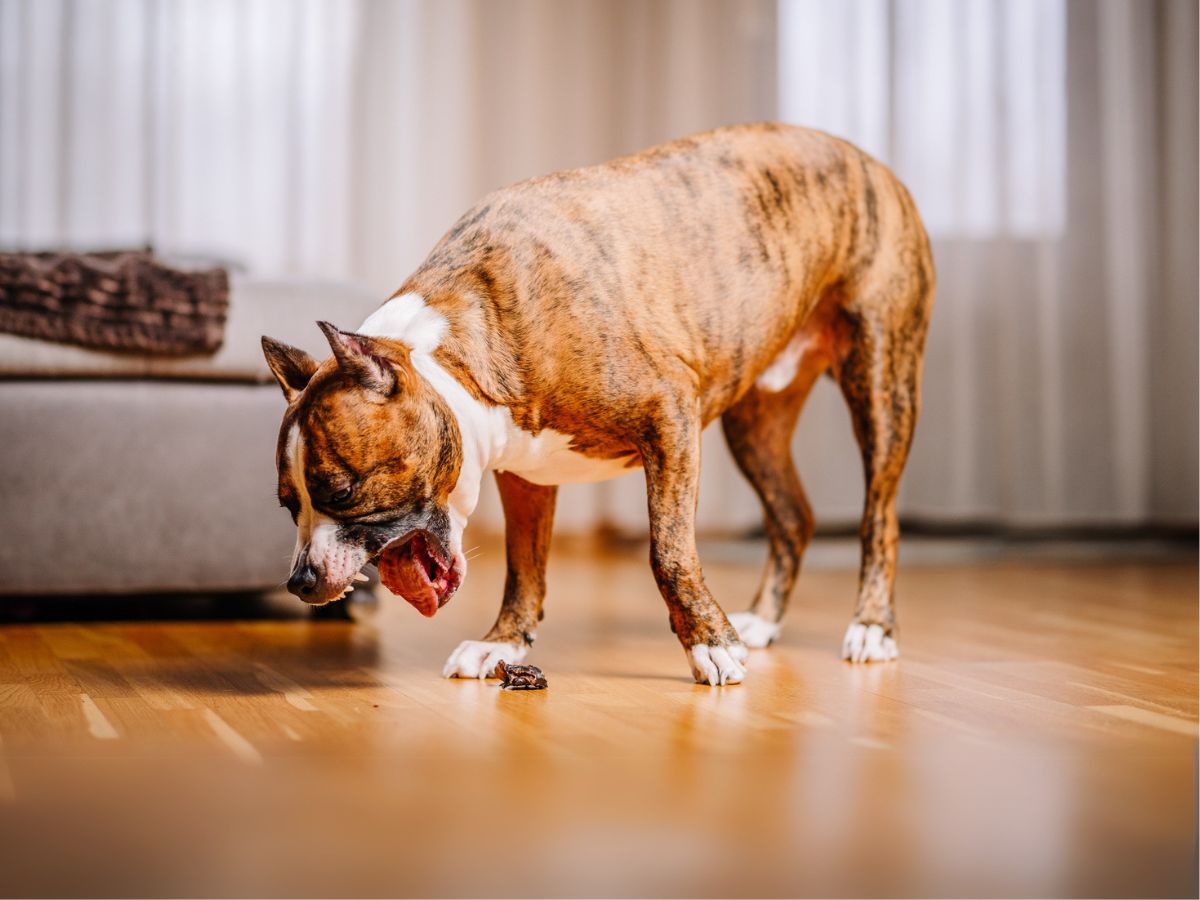My Dog Just Vomited. What Next?
Article - 7 min read • Updated Aug 29, 2024
Medically reviewed by Dr. Claire Tan, BVSc (Qld.), BAppSc (Qld.)

What goes in sometimes comes back out. While it is not unusual for a dog to throw up, the fact that he did should not be trivialised because it can be a symptom of something more serious.
So here’s a quick guide on vomiting in dogs (also applicable to puppies), so pet owners like you will know what to do when and if it happens.
How To Differentiate Regurgitation From Vomiting in Dogs?
There are differences between regurgitation and vomiting in dogs and it is important to know because regurgitation is a lot milder and may not be anything too serious, i.e. may not warrant a visit to your vet.
Regurgitation can happen (and can be quite common) because your dog got over-excited, ate too quickly or too much such that his/her oesophagus is very dilated and unable to move the food to the stomach properly etc.
When Do I Call My Vet?
There is no need to panic after you have established it is vomiting.
Observe your dog first. If vomiting has stopped, you can offer small amounts of water and a bit of bland food to your dog and see if he/she keeps the food down.
If your dog refuses to eat, it is okay and you can try again in a couple of hours. If vomiting does not come back and your dog starts to eat the bland diet, you can gradually reintroduce and mix in his/her usual feed.
What you will need to observe after an episode of vomiting include:
- Toxic Food, Poisons or Foreign objects
Look at the vomitus then check to see if there are signs that your dog might have ingested a foreign object. Your dog could also have eaten some human food which is toxic to dogs or ingested some poisonous item found around the house.
- Frequency of Vomiting
If your dog vomits 2 - 3 times or more within a 6-hour period, you may need to bring him/her to see your vet. It may be useful to take a photo of the vomitus and bring it along for the consultation for your vet to take a look. If your dog vomits on and off over a 1-week period, you should also bring him/her for a check-up.
- Other Accompanying Signs
Some of the signs to watch for include:- Blood in the vomit (Fresh blood or dried blood which looks similar to dried coffee grounds)
- Diarrhoea
- Lack of appetite
- Not drinking water
- Lethargy
- Bloated abdomen
*Note: Vomiting in puppies will require prompt action rather than a wait-and-observe approach used for adult dogs.
“If you have a puppy, it is best to bring him/her in to see a vet right away because they can dehydrate or lose electrolytes quite quickly.” - Dr. Claire Tan, BVSc (Qld.), BAppSc (Qld.)
These accompanying signs may be indicative of something more serious and will warrant a trip to your vet. Take note that the vomiting may stop, but if the signs above persist, you should still bring your dog for a thorough check-up.
If your dog is on medication that may cause vomiting (as a side effect), you should also stop feeding the medication and contact your vet as soon as possible.
Why is My Dog Vomiting?
Some of the possible causes of vomiting include:
- Ingesting foreign objects, e.g. bones, broken toys, general garbage etc.
Ingesting toxic food/drugs e.g. grapes, chocolate, paracetamol etc. or poison, e.g. fertiliser, rat poison etc. See the list of some of the most common food/items which are toxic to your pets here.
“Many articles out there teach pet owners methods for inducing vomiting if the dog has eaten a toxic food or poisonous item. We recommend pet owners to bring their dogs in for a diagnosis instead of a DIY approach. This is to prevent accidental aspiration of the vomitus or the vomit-inducing agent.” - Dr. Arman Chen, BVSc (Qld.), BSc (Leic.)
- Diseases, e.g. pancreatitis, diabetes, chronic kidney disease
- Parasites, e.g. roundworms, tapeworms etc.
- Viral Infections, e.g. parvovirus, distemper etc.
- Behavioural causes, e.g. stress or eating too fast
- Motion sickness
What Can I Do to Prevent My Dog From Vomiting?
Although we cannot protect them from everything, we as pet owners can reduce our dog’s risk of vomiting by doing the following:
- Dog-proof your rubbish bin so he/she cannot get to it and eat food scraps.
- Keep human food that is toxic to dogs away from his/her reach.
Regularly inspect toys and items which your dog likes to chew on. Throw away any bits or broken items to prevent ingestion. - Keep cleaning solutions, gardening chemicals, fertiliser, drugs etc. in a safe place where your dog has zero access.
- Vaccinate your dog, e.g. parvovirus is preventable with a vaccine.
- Deworm your dog regularly with medication.
With such a wide range of probable causes for vomiting, from mild to severe, it is best to let a vet examine your dog and provide a diagnosis. Come to Gaia Vets if you need help!
We’re open everyday, provide emergency care and have hospitalisation facilities in our premises. Call us at 6950 4533 (Jalan Besar) or 6727 7511 (Parksuites, Holland Grove Rd).